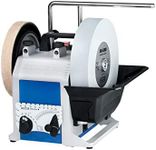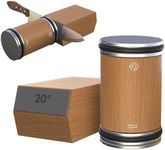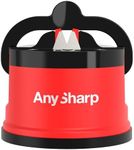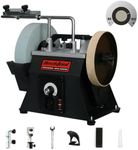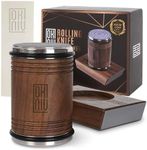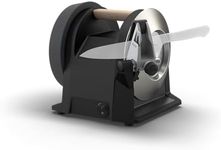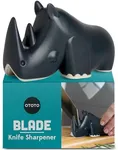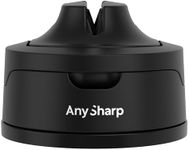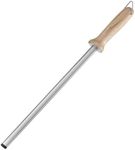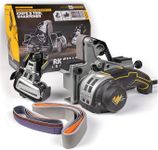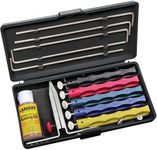Buying Guide for the Best Knife Sharpeners
Choosing the right knife sharpener is essential for maintaining the longevity and performance of your knives. A good sharpener will keep your blades in top condition, making your cutting tasks easier and safer. When selecting a knife sharpener, consider the type of knives you own, how often you use them, and your comfort level with sharpening tools. Understanding the key specifications will help you make an informed decision that suits your needs.Type of SharpenerKnife sharpeners come in various types, including manual, electric, and sharpening stones. Manual sharpeners are compact and easy to use, making them ideal for occasional sharpening. Electric sharpeners are convenient and efficient, suitable for frequent use and those who prefer a quick sharpening process. Sharpening stones offer the most control and precision, favored by those who are experienced or want to achieve a specific edge. Consider your comfort level and how often you plan to sharpen your knives when choosing the type.
Abrasive MaterialThe abrasive material of a sharpener determines how effectively it can sharpen a knife. Common materials include diamond, ceramic, and tungsten carbide. Diamond is the hardest and most durable, providing fast and efficient sharpening. Ceramic is gentler and ideal for honing and maintaining an already sharp edge. Tungsten carbide is aggressive and best for very dull knives. Choose the abrasive material based on the condition of your knives and how often you plan to sharpen them.
Sharpening AngleThe sharpening angle is the angle at which the sharpener holds the knife blade. Common angles range from 15 to 20 degrees. A 15-degree angle is suitable for fine, precision cutting, often used for Japanese-style knives. A 20-degree angle is more robust and durable, ideal for Western-style knives used for heavier tasks. Consider the type of knives you have and their intended use when selecting a sharpener with the appropriate angle.
Stages of SharpeningSome sharpeners offer multiple stages of sharpening, such as coarse, medium, and fine. A coarse stage is used for very dull or damaged blades, a medium stage for regular sharpening, and a fine stage for honing and polishing the edge. Multi-stage sharpeners provide versatility and are suitable for maintaining a variety of knife conditions. If you have a range of knives or want to ensure comprehensive maintenance, a multi-stage sharpener may be the best choice.
Ease of UseEase of use is an important factor, especially if you are new to knife sharpening. Some sharpeners are designed with user-friendly features like guides to help maintain the correct angle or ergonomic handles for better grip. Consider how comfortable you are with sharpening and whether you prefer a tool that simplifies the process. A sharpener that is easy to use will encourage regular maintenance of your knives.
PortabilityPortability is a consideration if you need to sharpen knives on the go or have limited storage space. Compact manual sharpeners or small sharpening stones are ideal for portability. If you frequently travel or have a small kitchen, a portable sharpener can be a convenient option. Think about where and how you plan to use the sharpener when considering its size and portability.
